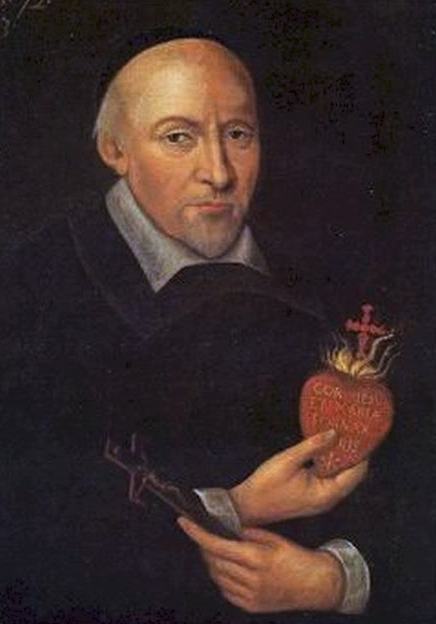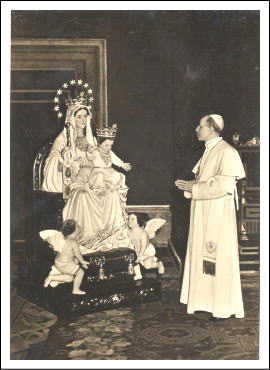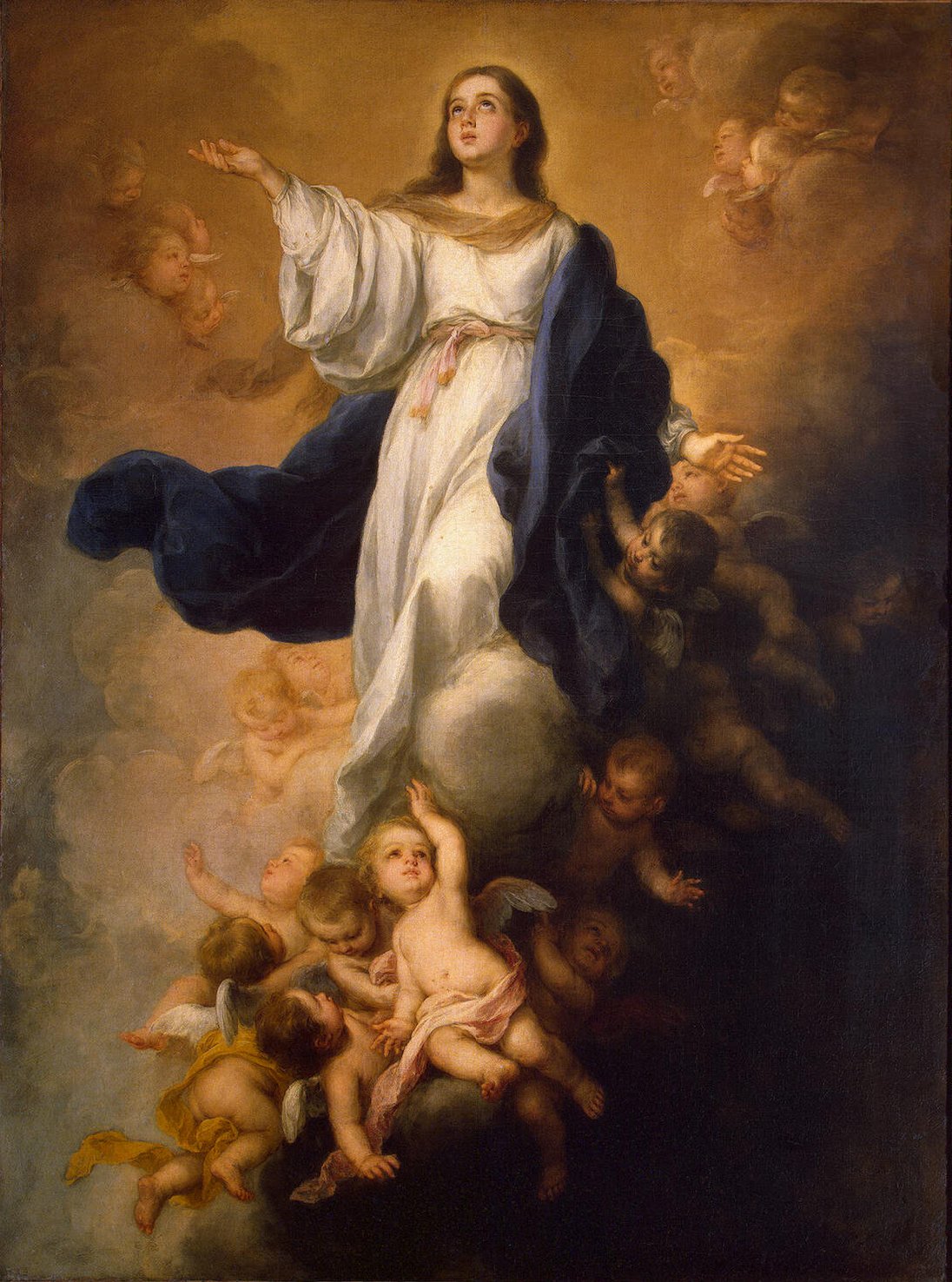"Jesus wishes to use you in order to make me known and loved. He wishes to establish devotion to my Immaculate Heart in the world. I promise salvation to those who embrace it; and these souls will be beloved of God like flowers arranged by me to adorn His throne." (Fatima, June 13th 1917)
"...Our Lady told me on June 13th, 1917, that she would never forsake me, and that Her Immaculate Heart would be my refuge and the way that would lead me to God.As She spoke these words, She opened Her hands, and from them streamed a light that penetrated to our inmost hearts. I think that on that day, I think the main purpose of this light was to infuse within us a special knowledge and love of the Immaculate Heart of Mary, just as on the other two occasions it was intended to do, as it seems to me, with regard to God and the mystery to the most Holy Trinity. From that day onwards, our hearts were filled with a more ardent love for the Immaculate Heart of Mary. From time to time, Jacinta said to me: “The Lady said that Her Immaculate Heart will be your refuge and the way that will lead you to God. Don’t you love that? Her Heart is so good! How I love it!” From the 3rd memoir of Sr Lucia of Fatima (1941)

On May 4, 1944, Pope Pius XII extended the Feast of the Immaculate Heart of Mary (which he had assigned previously in 1942 to be celebrated August 22) to the Universal Church. In 1942, the 25th anniversary of the Fatima apparitions, Pius XII had consecrated the world to the Immaculate Heart of Mary, in part due to the urging of Christ to Blessed Alexandrina of Balazar (see here), and as a result of a request from the Bishop of Gurza, one of Sister Lucia of Fatima's spiritual advisors, for the Holy Father to consecrate the world to the Immaculate Heart of Mary with a "special mention" of Russia (an oblique reference to Russia was ultimately made). This consecration took place amidst some of the most turbulent years of World War II, and indeed around the time of some of the major turning points during the war (battle of Stalingrad, the decisive defeat of the Axis forces at the battle of El Alamein etc). Indeed, Our Lord said that, as a result of the consecration, even though world peace would not ensue, at least, "the present distress [WWII] would be shortened". In fact, in his six-volume work on World War II, Winston Churchill reports in early 1943 (almost immediately after the consecrations performed by Pius XII) “the hinges of fate” turned in favor of the Allies. Those who heard the Holy Father's act of consecration attest to the noticeable tone of anguish in his voice, as the "Pastor Angelicus" felt the heavy weight on his soul of so many calamities, both moral and physical, daily being perpetrated during that terrible conflict.
 |
| Pius XII delivering the consecration prayer via radio to Fatima. Notice his anguished face and Mgr. Montini (the future pope Paul VI) standing on the far right of the photo |
The following is the text of the consecration:
- To You and to Your Immaculate Heart
- In this tragic hour of human history
- We entrust and consecrate ourselves,
- And the Holy Church.
- She is the Mystical Body of Your Jesus,
- Suffering and bleeding in so many parts
- And tormented in so many ways,
- We consecrate to You the whole world torn by bitter strive
- And consumed by the fire of hatred
- The victim of its own wickedness.
- Look with compassion to all material and moral destruction
- To the suffering and fears of fathers and mothers
- Of husbands and wives, of brother and sisters and innocent children.
- Look at the many lives cut down in the flower of youth
- So many bodies torn to pieces in brutal slaughter
- So many souls tortured and troubled
- And in danger of being lost eternally.
- Oh, Mother of Mercy, obtain peace for us from God!
- Obtain especially those graces, which can convert human hearts quickly.
- Those graces, which can prepare, establish and insure peace.
- Queen of Peace, pray for us;
- Give the world at war the peace for which all are longing,
- Peace in Truth, Justice and the Charity of Christ.
- Give them peace of the arms and peace of mind,
- That in tranquillity and order
- The Kingdom of God may expand.
- Grant Your protection to infidels
- And to those still walking in the shadow of death;
- Give them peace and permit that the sun of truth may raise upon them;
- And that together with us
- They may repeat before the Only Saviour of the World:
- Glory to God in the highest
- And peace on earth among men of good will (Lk2.14)
- Give peace to the people separated by error and schism,
- Particularly those, who have special devotion to You
- And among whom there was no home,
- Where Your venerable Icon was not honoured,
- Though at present it may be hidden
- In the hope for better days.
- Bring them back to the One Fold of Christ,
- Under the One True Shepherd.
- Obtain peace and complete liberty for the Holy Church of God,
- Check the spreading flood of neo-paganism,
- Arouse within the faithful love of purity
- The practice of Christian life and apostolic zeal,
- So that the people who serve God,
- May increase in merit and number.
- All of humanity were once consecrated to the Heart of Your Son.
- All our hopes rest in Him, Who is in all times
- Sign and pledge of victory and salvation.
- Forever we consecrate ourselves to You
- And to Your Immaculate Heart,
- Oh, Mother and Queen of the World!
- May Your love and patronage hasten the victory of the Kingdom of God,
- May all nations, at peace with each other and with God, proclaim You Blessed
- And sing with You from one end of the earth to the other,
- The eternal Magnificat of glory, love and gratitude
- To the Heart of Jesus, in which alone,
- They can find Truth, Life and Peace.
"It is only in the twelfth, or towards the end of the eleventh century, that slight indications of a regular devotion are perceived in a sermon by St. Bernard (De duodecim stellis), from which an extract has been taken by the Church and used in the Offices of the Compassion and of the Seven Dolours. Stronger evidences are discernible in the pious meditations on the Ave Maria and the Salve Regina, usually attributed either to St. Anselm of Lucca (d. 1080) or St. Bernard; and also in the large book "De laudibus B. Mariae Virginis" by Richard de Saint-Laurent, Penitentiary of Rouen in the thirteenth century. In St. Mechtilde (d. 1298) and St. Gertrude (d. 1302) the devotion had two earnest adherents. A little earlier it had been included by St. Thomas Becket in the devotion to the joys and sorrows of Mary, by Blessed Hermann (d.1245), one of the first spiritual children of St. Dominic, in his other devotions to Mary, and somewhat later it appeared in St. Bridget's "Book of Revelations". Tauler (d. 1361) beholds in Mary the model of a mystical, just as St. Ambrose perceived in her the model of a virginal soul. St. Bernardine of Siena (d.1444) was more absorbed in the contemplation of the virginal heart, and it is from him that the Church has borrowed the lessons of the Second Nocturn for the feast of the Heart of Mary. St. Francis de Sales speaks of the perfections of this heart, the model of love for God, and dedicated to it his "Theotimus"."

St John Eudes (1601-1680) is the great apostle to the Hearts of Jesus and Mary (he was referred to as the "Doctor of the Heart of Mary" by Pope St Pius X), and it is thanks to this great missionary and mystic who came to illuminate the Church on the wonders of the most Pure Heart of the dear Mother of God that the devotion came to be much greater known and practiced among the pious faithful. His main work exposing the devotion to the Immaculate Heart of Mary is, "The Admirable Heart of Mary" (complete work here). What follows is a short excerpt from this work, Part I, Chapter 3:
"We may consider the most pure body of Mary as a sacred temple, indeed as the most august temple that ever was or will be, next to the temple of the sacred humanity of Jesus Christ, her divine Son. We see her virginal heart as the sacred altar of this temple. We behold Divine Love as the high priest offering to God uninterrupted sacrifices in this temple and on this altar. We contemplate the Divine Will bringing many victims to be sacrificed on this altar of Mary’s heart. Among the victims we distinguish the eleven natural passions slaughtered by the flaming sword which the high priest holds in his hand, that is by the efficacy of Divine Love. They are consumed and transformed into the heavenly fire which burns upon the altar of her heart; they are immolated to the most Holy Trinity in a sacrifice of praise, of glory and of love.
Thus did the great high priest, Divine Love, sacrifice on the holy altar of Mary’s heart, all her passions, inclinations and sentiments of love, hatred, desire, aversion, joy, sadness, hope, distrust, daring, fear and anger.
And this sacrifice commenced the first instant the holy Heart of Mary began to beat in her virginal breast, that is, the very first instant of this Immaculate Virgin’s life. It continued uninterruptedly until her last breath, gaining in sanctity and in love with every passing moment.
O great and truly admirable sacrifice, so wonderfully agreeable to the God of hearts! O blessed Heart of the Mother of Fair Love, consecrated altar whereon so divine a sacrifice was offered! Blessed art thou, O most Holy Heart, for having loved and desired nothing but Him who alone is amiable and desirable! Blessed art thou for having established thy joy and thy contentment in loving and honoring Him, who alone is capable of satisfying the heart of man, and for having known no other grief than that caused by the offenses committed against His Divine Majesty!"
It should be noted, that devotion to the Immaculate Heart of Mary is inextricably linked to devotion to the Sacred Heart of Jesus. The two hearts are inseparable, indeed the flesh of the Heart of Jesus was formed and created in the Virginal Womb of His most august Mother, the two hearts beating together and the blood of the Two intermingling with each other during those nine holy months during which time the Holy Babe stood in the womb of the Virgin as in the most dear of abodes! In fact, St Margaret Mary Alacoque called on those souls who wished to have a closer union with the Sacred Heart of Jesus to draw closer for this very purpose with the Mother of God.

St John Eudes clearly brought this point across in the following text ("Never Separate What God Has So Perfectly United"):
"Devotion to the most Blessed Virgin, Mother of God is so pleasing to her Son, and is so dear and commendable to all true Christians, that it is not necessary to recommend it to those who desire to lead a Christian life.I shall only tell you that you must never separate what God has so perfectly united. So closely are Jesus and Mary bound up with each other that whoever beholds Jesus sees Mary; whoever loves Jesus, loves Mary; whoever has devotion to Jesus, has devotion to Mary. Jesus and Mary are the two first foundations of the Christian religion, the two living springs of all our blessings, the two centers of all our devotion, and the two objectives you should keep in view in all your acts and works. A man is no true Christian if he has no devotion to the Mother of Jesus Christ and of all Christians. St. Anselm and St. Bonaventure assure us that it is impossible for persons who are not loved by the Mother of Christ to have any part with Him. Conversely, it is impossible for anyone to perish upon whom she looks with favor.As you must continue the virtues of Jesus and keep with you His sentiments, so you must also continue and maintain in your hearts the love, tenderness and devotion that Jesus cherished for His Blessed Mother. He loved her most perfectly and accorded her the very highest honor in choosing her to be His Mother, giving Himself to her as Her Most Beloved Son, taking from her a new being and life, becoming subject to her, following her guidance in outward things during His Childhood and hidden life, afterwards crowning her Queen of heaven and earth, glorifying her and causing her to be glorified by the whole world."





